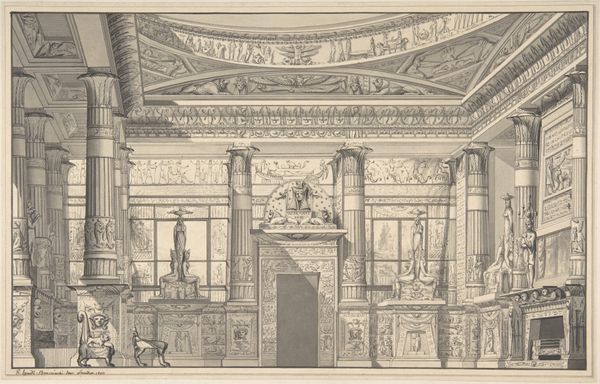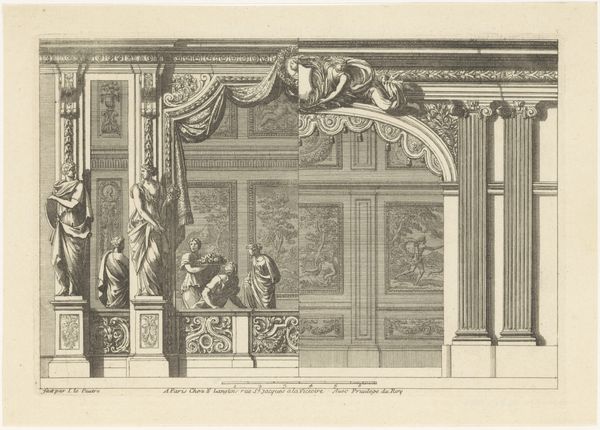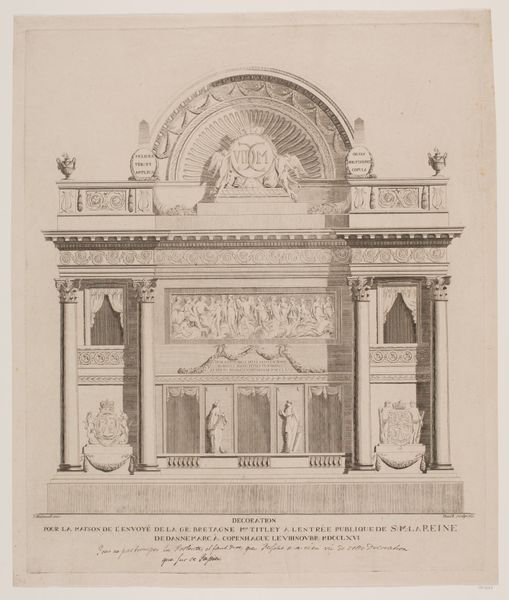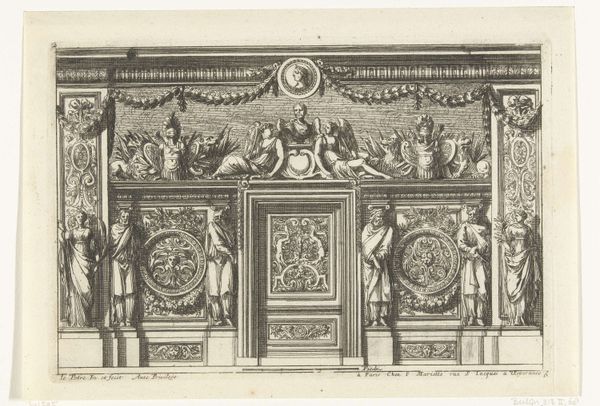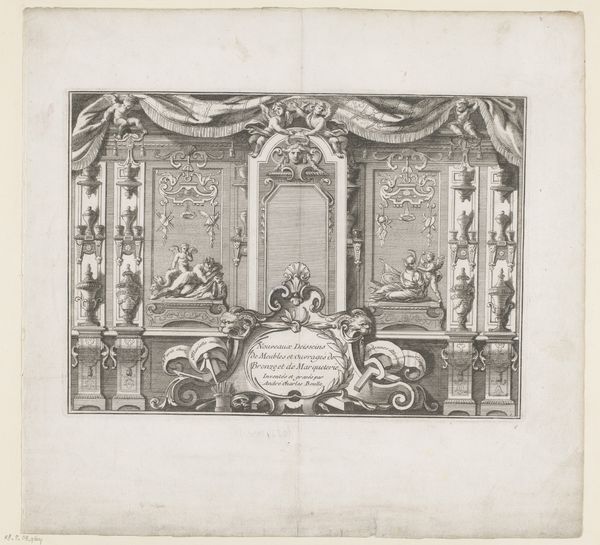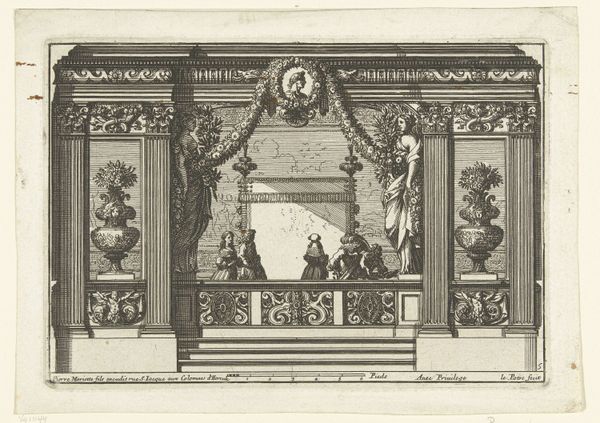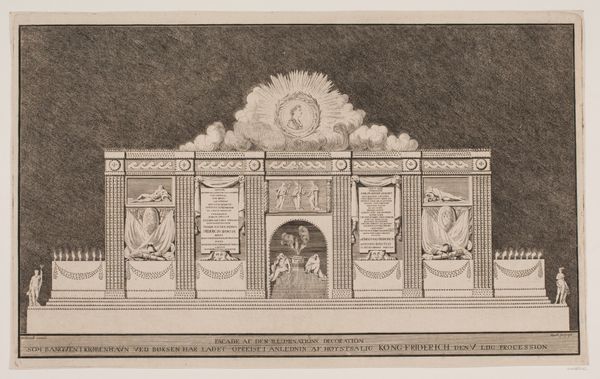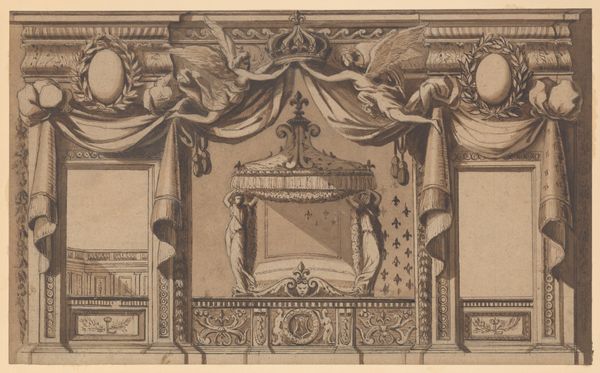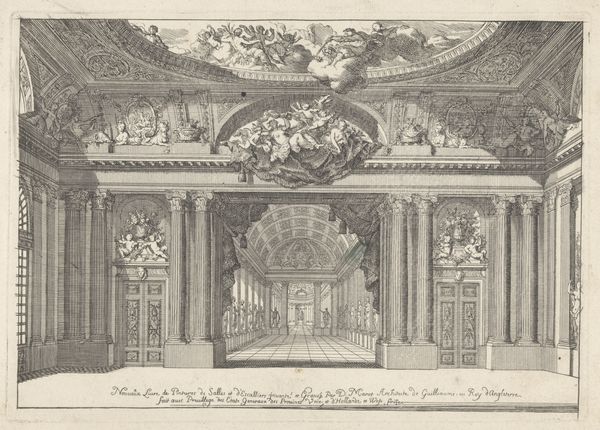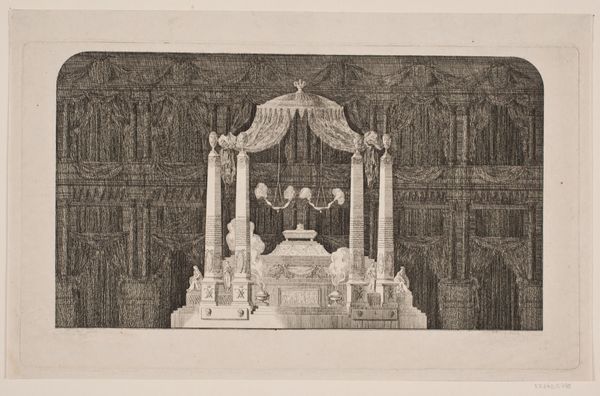
Design for the Porcelein Cabinet at the Charlottenburg Palace, other side 1706 - 1716
0:00
0:00
drawing, print, engraving, architecture
#
drawing
#
baroque
# print
#
decorative-art
#
engraving
#
architecture
Dimensions: Sheet: 13 3/8 × 16 15/16 in. (34 × 43 cm) [cut within plate marks]
Copyright: Public Domain
Editor: This engraving, "Design for the Porcelain Cabinet at the Charlottenburg Palace," created between 1706 and 1716 by Martin Engelbrecht, strikes me with its almost obsessive detail. Every surface is covered! What can you tell me about it? Curator: It’s fascinating how the print embodies Baroque ideals of abundance and display. Considering its intended location, the Charlottenburg Palace, it speaks volumes about the royal court's desire for prestige. What impact do you think such overwhelming ornamentation might have had on the viewer? Editor: I imagine it was meant to impress, perhaps to communicate power and wealth? Did porcelain have a specific significance at the time? Curator: Absolutely. Porcelain was a highly prized commodity in Europe, often associated with the exotic and the luxurious. The cabinet design reflects the cultural fascination with collecting and showcasing such rarities. But notice how the design also uses symmetry to create order amidst all the decorative excess. How does that tension influence your interpretation? Editor: The symmetry is interesting. It suggests control, maybe a taming of the "exotic" through formal design? Were these cabinets actually built as depicted here? Curator: That's the question, isn't it? This print might be more about promoting an image of refined taste and imperial grandeur than depicting reality. Remember that prints like these circulated widely. So, their impact extended far beyond the palace walls, shaping perceptions of the monarchy. What does this tell us about the public role of art during this period? Editor: That it wasn’t just about aesthetics, but about actively crafting a public image and political messaging through visual media. Thanks, I've never thought about Baroque art in this light before. Curator: It’s a reminder that even decorative arts can tell us stories about social ambitions, power dynamics, and the politics of representation. A new way to see beauty.
Comments
No comments
Be the first to comment and join the conversation on the ultimate creative platform.
